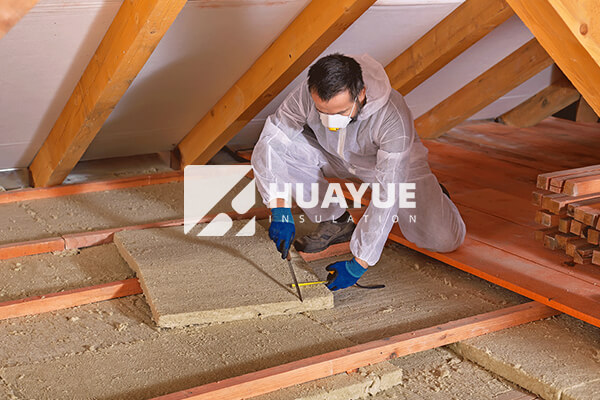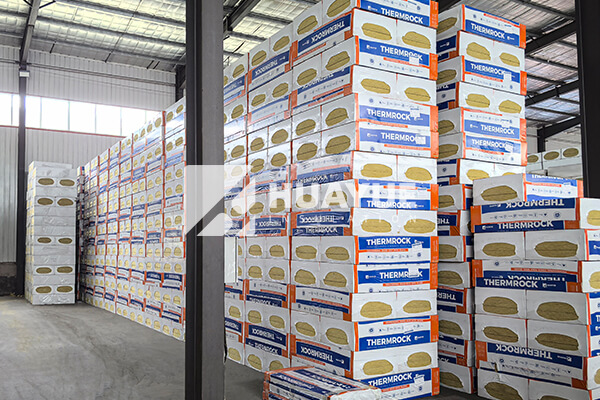Rock Wool Attic Insulation: Is It the Right Choice for Your Project?
Most homeowners worry about energy bills and uncomfortable rooms. Attic insulation problems often feel overwhelming, making it hard to know what material is truly best for your needs.
Rock wool stands out as an ideal attic insulation thanks to its fire resistance, moisture control, and excellent thermal performance. With proper installation, it keeps your home comfortable year-round while lowering your energy costs.

Choosing an attic insulation material can feel like a high-stakes decision. I have worked closely with many clients facing similar concerns—especially those who want superior protection, long-term reliability, and lower maintenance needs. Let me help you unravel the truth about rock wool attic insulation, so you can protect your investment and enjoy peace of mind.
Is Rock Wool Good for Attic Insulation?
For anyone worried about attic energy loss or fire hazards, it is hard to know which insulation material to trust. The wrong choice can cost you money and bring unnecessary stress for years to come.
Rock wool is an excellent option for attic insulation. It resists fire, damp, and pests while delivering top-notch thermal and acoustic performance. It is durable, easy to install, and does not settle or degrade over time.

I remember the first time I saw rock wool installed in an attic during one of my site visits. The material was firm and held its shape. That meant no gaps or sags, even years after installation. Here are the key reasons why rock wool works so well for attics:
Why Choose Rock Wool for Your Attic?
| Feature | Rock Wool Benefit | How It Helps in Attics |
|---|---|---|
| Fire Resistance | Withstands heat up to 1000°C | Protects against fire hazards |
| Moisture Resistance | Does not absorb water or promote mold | Keeps attic dry and healthy |
| Soundproofing | Dense fibers block outside noise | Creates a quieter indoor environment |
| Durability | Will not rot, shrink, or break down over decades | Reliable, long-term insulation |
| Pest Resistance | Inedible and difficult for rodents to nest | Reduces risk of pest infestation |
| Easy to Handle | Cut and shape for tight fits around joists/rafters | Reduces installation mistakes |
Rock wool’s structure gives it those benefits. It is made by spinning molten rock into fibers, making it naturally fireproof and water-repellent. Time and again, I have seen it withstand harsh attic conditions—including leaky roofs and high attic temperatures—without losing performance. When your attic stays well-sealed and efficiently insulated, your home feels more comfortable, and your energy bills drop.
Do Mice Hate Rock Wool Insulation?
Pest problems can ruin even the best attic insulation setups. Nobody wants to find nests or dropping in their insulation after spending time and money on improvements.
Mice generally avoid rock wool insulation because it is tough and scratchy. Rock wool does not provide food or comfortable nesting material, so rodents typically stay away from it.

I have met many building owners who had ongoing rodent issues before upgrading to rock wool insulation. They reported that mice left the area soon after the new installation. Here’s how the material works against unwanted critters:
How Rock Wool Deters Mice and Pests
| Factor | Why It Deters Mice | Result for Your Attic |
|---|---|---|
| Fiber Texture | Fibers are sharp and dense | Uncomfortable for burrowing/nesting |
| No Nutrition | Completely inorganic material | No food source for rodents |
| No Shelter Value | Stays firm, does not compress | Mice cannot create tunnels or nests |
| No Odor or Attraction | No scent that attracts animals | Less interest from local wildlife |
Rock wool’s composition makes it a poor environment for any pest, not just mice. This unique advantage means you do not have to worry as much about replacing foul-smelling or ruined insulation later. I have personally seen foam and fiberglass attic insulation trashed by animals, but rock wool installations stay pristine for years.
Is Rock Wool Insulation Mold Proof?
Dampness and mold infestation cause headaches for countless property owners. The attic is especially vulnerable if insulation holds moisture, creating the perfect breeding ground for mold.
Rock wool insulation is naturally mold-proof. It does not absorb moisture and does not support the growth of mold or mildew, even in wet attic conditions.
Mold prevention always comes down to three factors: moisture control, airflow, and choosing the right materials. In my experience, rock wool brings unbeatable peace of mind for mold-prone attics:
Why Rock Wool Resists Mold and Mildew
| Property | Impact on Mold Growth | Benefit for Homeowners |
|---|---|---|
| Water Repellency | Sheds water, does not retain damp | Insulation stays dry |
| Inorganic Composition | No food for mold or bacteria | No organic matter to decompose |
| Breathable Structure | Allows air flow, not trapped heat | Reduces condensation and humidity |
| Stable Over Time | Maintains performance when wet | Prevents unexpected failures |
The attic is often the first place I check after a leak or roofing problem. When rock wool has been installed, I usually find it still dry to the touch, even if nearby wood is damp. It gives me confidence that a mold-free attic is not just a dream but a real possibility—saving money and avoiding future cleanup headaches.
Conclusion
Rock wool attic insulation offers exceptional fire, pest, and mold resistance while delivering consistent thermal and soundproofing performance—making it the smart choice for long-term attic protection.
You may also be interested in:
Ready to Get Started?
Get in touch with our experts for personalized solutions tailored to your needs.
Get Free QuoteLatest Articles

Glass Wool Fire Rating: How Safe Is Your Insulation?
Dec 25, 2025
Let's Work Together
Ready to take your business to the next level? Get in touch with our team of experts and let's discuss how we can help you achieve your goals.
Get Free Solutions






